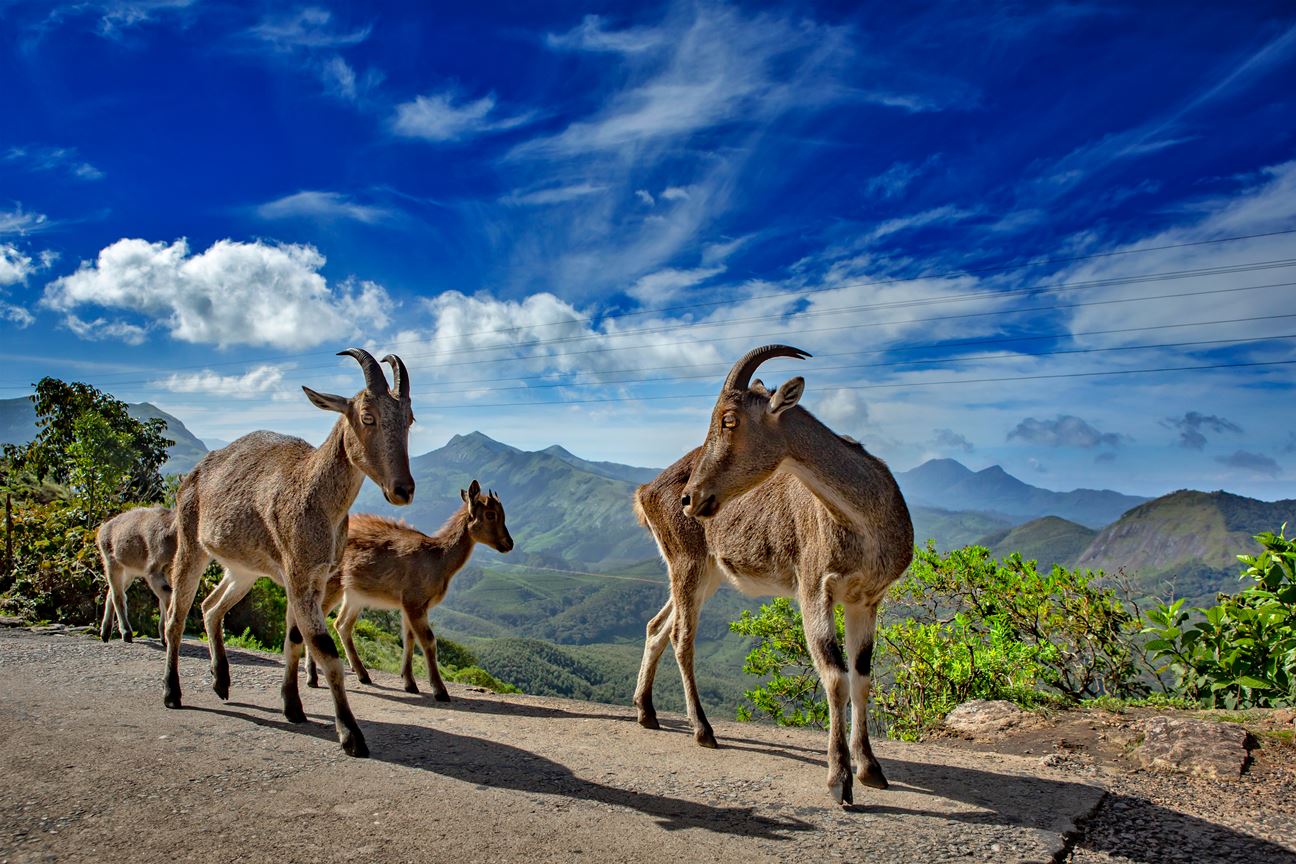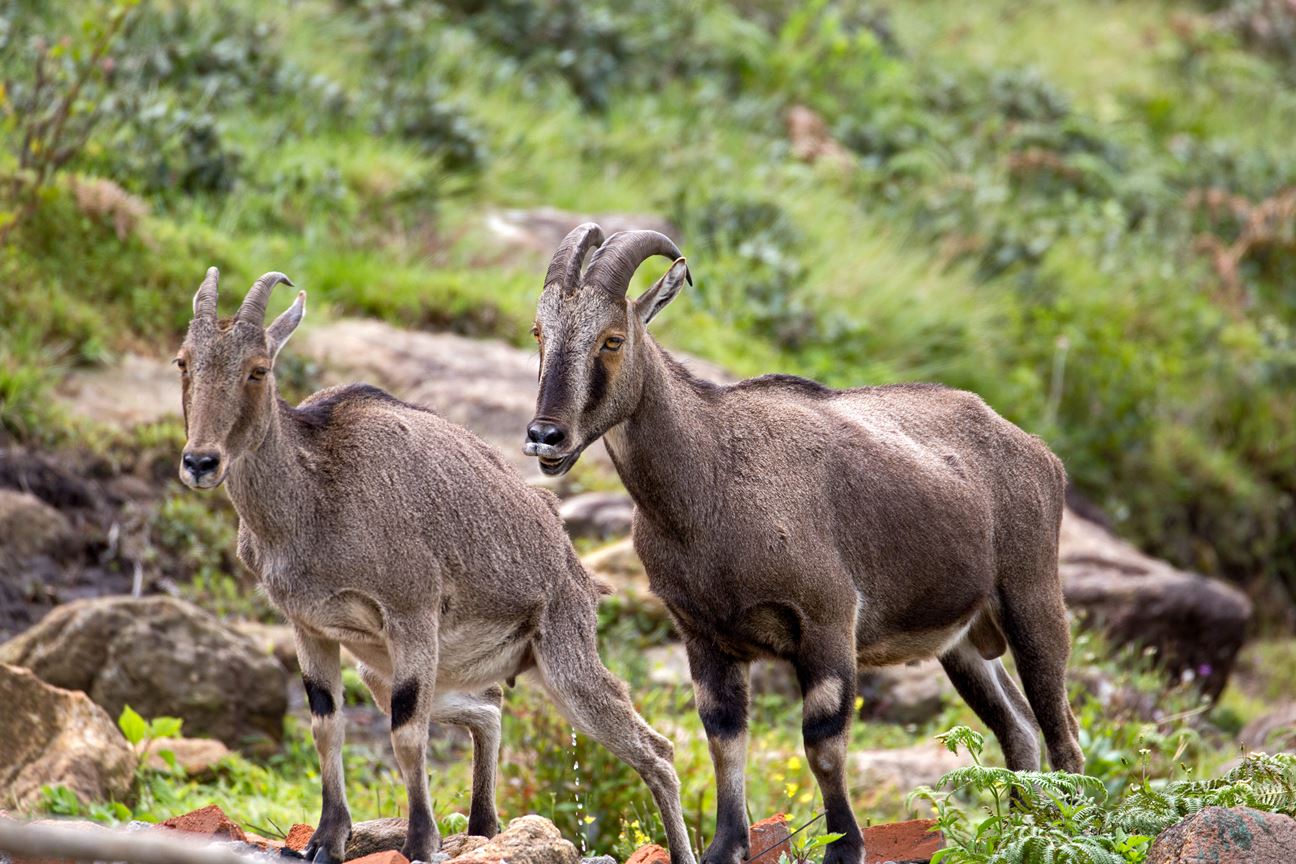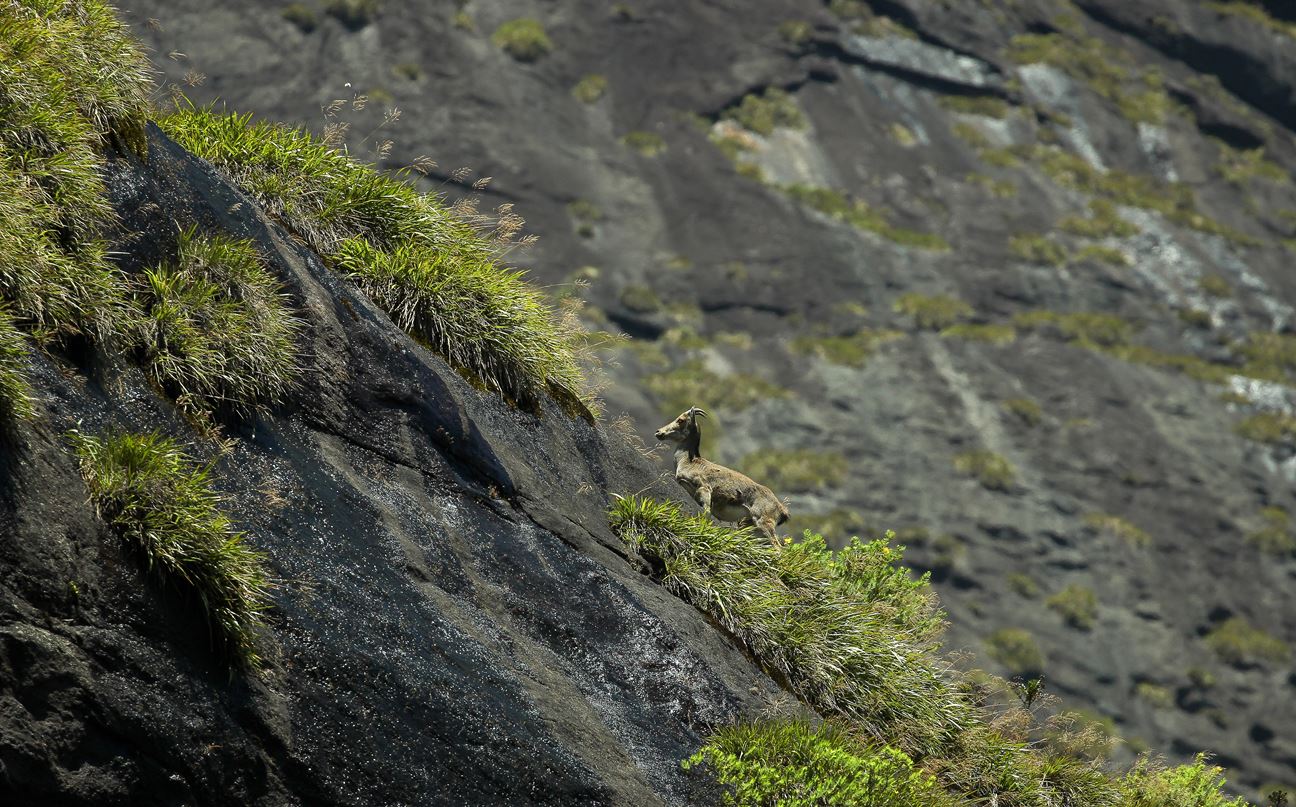The lockdown which has extensively helped our mother nature and wildlife heal. One such widely impacted wildlife species is the Nilgiri Tahr, an endangered species of wild goat.
Nilgiri Tahr, the state animal of Tamil Nadu, is an endangered species of a wild mountain goat; endemic to the hills of the Western Ghats in India. It is estimated that only 2000-2200 individuals are left in the wild and hence included in the IUCN’s Red List of endangered species.

The Nilgiri Tahr was almost extinct in the late 19th century. Nilgiri Game Association, High Range Wildlife Association, Environment Preservation Association, and others took a lot of efforts to save them from extinction! The saddest part is that there were less than 100 left by the early 20th century.
In 2019, the Eravikulam National Park was shut down 2 months prior as it was noticed that the breeding season of the tahrs had started early. It is usually closed in the calving season from January to April, but there are always a few vehicles and residents who travel to the tribal gram panchayat. Luckily, this year it has all stopped completely.
The decline in human interference due to the COVID lockdown, too, has worked immensely in favour of the tahrs. It was noted in the 2020 survey that the population in Eravikulam National Park has increased to 723. There have been 155 new births in a year, which is the highest in a long time! The survey was held by the Forest Department officials in April-end. Wildlife expert, Dr James Zachariah, mentioned that the 19% birth rate indicates a healthy population, but the mortality rate in juveniles is very high at 44-52%. However, the forest officials have seen substantial growth since these 3-4 years. They’ve closed the parks at times, completely stopped poaching, and kept a track on the spread of some fast-spreading thorny plants like wattle trees.
Despite it all, the Nilgiri Tahr is a lesser-known animal to many. Let's learn some more about this beautiful animal!
Physical Description:
The males are about 100 kilograms in weight, 100 cm at shoulder height, and 150 cm in length. Males are mostly dark brown-black in colour with white and black facial stripes, a silver saddle (back) patch, and black-and-white patches on the front legs. Black hair forms a mane, making the mid-dorsal stripe prominent.

The females are smaller with 50 kg weight, 80 cm at shoulder height, and 110 m in length. Their bodies are almost grey and have faint facial markings.
The horns of a male are bigger and thicker than that of a female. The horns of a male grow up over 40 cm, and that of a female grow up to 26 cm. The young are born with a grey coat and pale underparts. The coat of males starts showing as they age — almost after 2 years.
Location:

The animals are indigenous to grassy meadows near cliffs, at an elevation of 1,200-2,500 m. They are seen on the mountain slopes in Kerala and Tamil Nadu. Anamalai Hills, Nilgiri Hills, Palani Hills, and Eravikulam National Park are a few of the places where you’ll find them. These agile animals even travel to the steep rocky cliffs searching for grass and to get away from a predator. They’re often called “Varai Aadu” which means cliff goat.
Breeding:
- The tahrs are said to mate mostly in the monsoon months (June to August); albeit it can also happen throughout the year. The birth season typically is in January or February. Usually, they breed twice a year and have one offspring at a time. Giving birth to twins is quite rare.
- The gestation period is almost 178–190 days.
- The young are weaned for 4–6 months and start eating solid food in two weeks. They mostly hide in spots when their mother leaves to forage.
Behaviour:
These tahrs roam in herds and are most active in the early morning and late afternoon. They roam in mixed herds or all-male herds of 10–70 individuals. Most of them rest in shaded places of the cliffs in the afternoon, however, one is said to always be on a lookout while the others rest. Their alarming sound is a whistle or a snort.
Predators:
Big cats like tigers, leopards or jackal and wild dogs are some natural predators. Other major threats are habitat loss, competition for food with domestic livestock, and overhunting.
Interesting Facts:
- It is the largest of the three tahrs: the Himalayan Tahr, the Arabian Tahr, and the Nilgiri Tahr.
- The horns of the tahr reveal their age. The backward turning horns reflect growth rings inside, which keep increasing every year.
- Male tahrs are polygamists and mate with more than one female. Also, males have to fight with other males to win over a female for mating.
- Despite their name, they’re closely related to the Sheep — more than the Himalayan or Arabian Tahr. Their genus 'Nilgiritragus' is related to the 'Ovis' family (the family of sheep).
- Unfortunately, these beautiful creatures have a very short lifespan of 3–9 years — 3-4 being an average in the wild. The male offsprings are sexually mature only after two years old, hence there’s a fair chance that they may reproduce only once! The females are said to be sexually mature after 16 months.
- Eravikulam National Park boasts of the largest wild population in the world with over 700 of these beautiful species.
Now that we know about these beautiful creatures, let’s spread the word and save it once again. As the mating season has already begun in the lockdown, we can hope that there’s a sturdy rise in the population next year too!